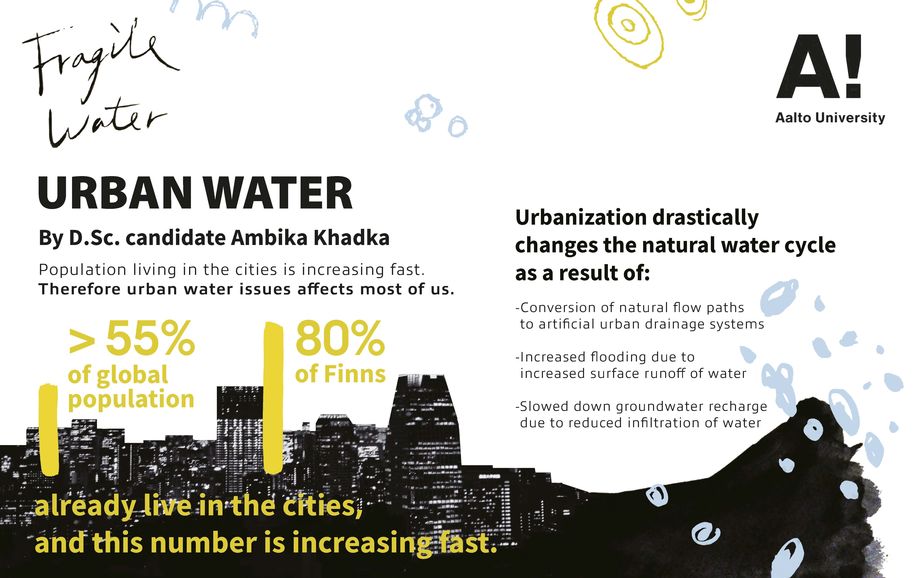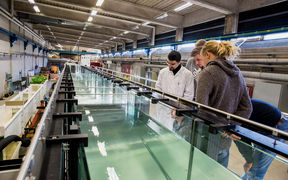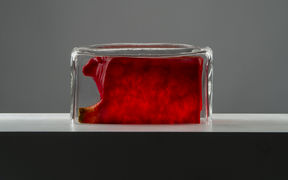How can we conserve the natural cycle of water in cities?

Aalto University's design students and water researchers joined forces to visualise sustainable water solutions in the Fragile Water exhibition, showcased at Helsinki Airport in 2019.
'The future of our world lies in urban environments. More than half of the world’s population currently live in urban areas—and this number is growing, which means that urban water issues affect most of us.
City growth means that we cover larger and larger areas with impervious surfaces, such as asphalt, which drastically changes the natural water cycle. Consequently, storm water and meltwater from snow cannot soak into soil and, instead, they become surface runoff.
Changing the natural water cycle has many effects on our living environments and nature itself. Urban floods increase due to increased surface runoff, and groundwater recharge slows down because of reduced infiltration. At the same time, the air temperature of cities rise, as the cooling effect of water vaporising from the ground is lost.
Climate change can also cause extreme weather events, such as heavy rains and heat waves, to occur more frequently, which aggravates other challenges caused by urbanisation. Urban planning based on nature-based solutions can contribute to alleviating the adverse impacts of urbanisation and help in adapting to climate change impacts.
Nature-based solutions mimic natural processes in urban areas. Green roofs, permeable pavements and rain gardens allow the retention of water to support the natural hydrological cycle as well as purification of water even in the middle of concrete jungles. Not to mention, they are aesthetically pleasing – and bring some green to our urban centres.'
Ambika Khadka, Doctoral Student

Water and Environmental Engineering
Water and Environmental Engineering research at Aalto University aims to find solutions to decrease resource scarcity and to support sustainability. Our research is divided into two strategic areas: global water issues and sustainable circular economy, which are further divided into four research entities.

Fragile Water exhibition highlights vulnerability of water resources
Water resources are limited and vulnerable in many places in the world. Design students and water researchers joined forces to visualise sustainable water solutions in the Fragile Water exhibition.

Read more news

The School of Business renews its status as a Champion member of the global PRME network for sustainability education for 2026–2027
Only two other Nordic universities were awarded Champion-level membership
Unite! Seed Fund 2026: Open for applications
The 2026 Unite! Seed Fund call is officially open, offering funding across three strategic lines: Student Activities, Teaching and Learning, and Research and PhD. Deadline for applications is 20 March 2026.






